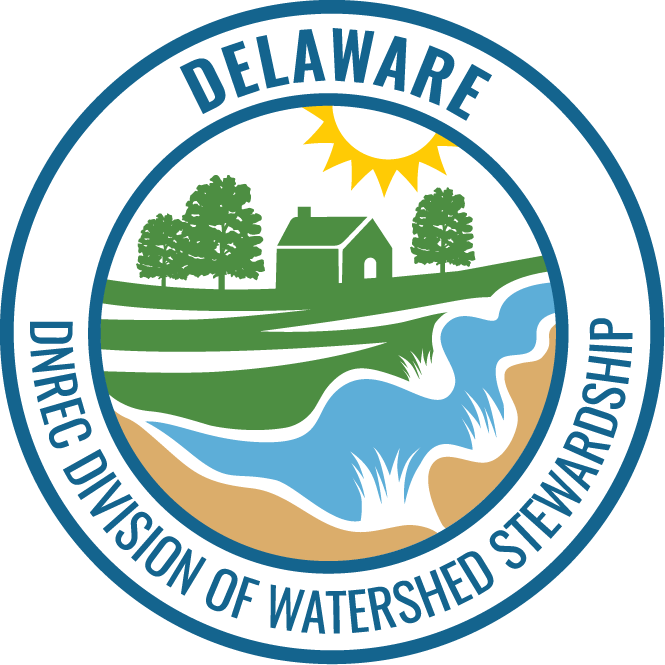
Facebook Twitter Instagram YouTube RSS Feed
Written on: May 27th, 2021 in Wetland Assessments
By Alison Rogerson, Wetland Monitoring and Assessment Program (WMAP) In March we shared some results about the status of wetland acreage in Delaware between 2007 and 2017. This time we’re taking a closer look at the increasing number of stormwater ponds popping up across the state. Is this a good trend or something to be […]
Written on: May 17th, 2021 in Wetland Assessments
By Erin Dorset, Wetland Monitoring & Assessment Program (WMAP) Here at the Wetland Monitoring & Assessment Program (WMAP), most fieldwork is done in the Delaware Bay and Inland Bays drainage basins, where waters move east to the Delaware Bay and the Atlantic Ocean. But, in 2018, WMAP had the opportunity to perform wetland assessments in […]
Written on: March 22nd, 2021 in Wetland Assessments
By Alison Rogerson, Wetland Monitoring and Assessment Program (WMAP) What is a state wetland program plan? Delaware creates five-year wetland program plans to serve as a guide that identifies and prioritizes areas where information or action is needed to advance wetland management statewide. It is created using the goals of many different wetland players across […]
Written on: March 22nd, 2021 in Wetland Assessments
By Erin Dorset, Wetland Monitoring and Assessment Program (WMAP) Back in December, WMAP introduced you to DNREC’s new 2017 wetlands maps. Since then, WMAP has been hard at work finalizing a report detailing the status and trends of wetlands throughout the State of Delaware. Soon, the entire report will be available, but in the meantime, […]
Written on: December 9th, 2020 in Wetland Assessments
Guest Student Writer: Sandra Demberger, M.S., recent graduate, Villanova University Boaters, kayakers, and bird watchers are drawn to salt marshes for their quiet beauty. Wildlife, ranging from great blue herons to tiny fiddler crabs, and marsh grasses rustling in the soothing breeze, all draw recreators to these coastal systems. But did you know, these seemingly […]
Written on: September 24th, 2020 in Wetland Assessments
by Alison Rogerson, Wetland Monitoring & Assessment Program Measuring wetland health and function is a primary task for DNREC’s Wetland Monitoring and Assessment. We work on this every year, one watershed at a time. Tracking wetland acreage across the state is also vitally important to managing Delaware’s wetland. Updating statewide wetland maps is a lot […]
Written on: September 17th, 2020 in Wetland Assessments
By Erin Dorset, Wetland Monitoring & Assessment Program Most of our wetland assessments throughout the years have been in central and southern Delaware, but in the summer of 2017, our Wetland Monitoring and Assessment crew went north to perform wetland condition assessments at 116 wetlands in the Red Lion watershed. From protocol updates to navigating […]
Written on: March 6th, 2020 in Wetland Assessments
In tidal marshes, accurate representation of marsh elevation or height is critical for understanding sea-level rise, tidal inundation, and storm surge. Small changes in marsh elevation can significantly change the water movement (hydrology), plants (vegetation), and habitat. Our study aims to look at and correct a remote sensing method known as light detection and ranging (LiDAR), in order to provide accurate elevation data to scientists and coastal managers in Delaware.
Written on: September 16th, 2019 in Wetland Assessments
Wetlands work is not for the faint of heart. I won’t sugar coat it for you. Its dirty. Its messy. Oftentimes pretty buggy (even though we really lucked out this year). Yep. Wetlands can be all of those things. But – they are also so much more.
Written on: September 6th, 2019 in Wetland Assessments
When a power company needed to replace a utility pole in a wetland area that was a part of a national vegetation monitoring program within the Delaware National Estuarine Research Reserve (DNERR), staff at the Reserve worked closely with the power company and with other state agencies to maintain the integrity of the datasets being collected, but also took the opportunity to begin a study on how the marsh would recover naturally from the disturbance.